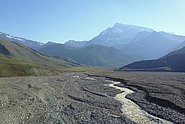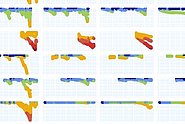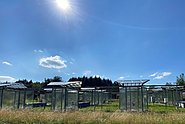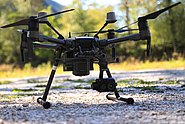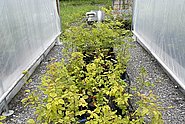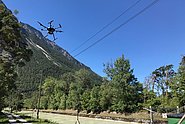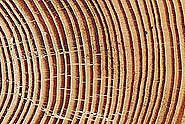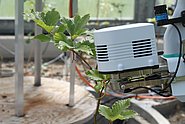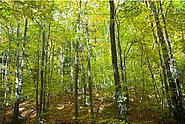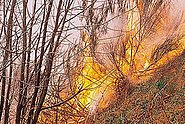In the long run, it will not only be hotter in Switzerland, but also drier. Droughts have serious consequences for agriculture, water supply, energy production or natural ecosystems. We are creating the data basis to recognize critical droughts at an early stage and to assess and mitigate their consequences for nature and society.
Lack of snow in winter 2022/23: FAQ ¶
Contents ¶

From an economic and social perspective, as well as for risk management, early detection of critical drought conditions is essential. On our drought.ch platform, a wide range of hydrological indicators are combined in a nationwide early drought detection system. The platform serves as the basis for a national federal early warning system for drought in Switzerland. In addition, we develop models and study large-scale weather situations in order to be able to predict water deficits several weeks in advance.
Heat waves and the associated extreme droughts are on the rise as global warming progresses. In the Alpine region in particular, they have the potential to trigger social and economic crises, for example if natural hazards become more frequent or cause worse damage than before. The CERC research center contributes to a better understanding of these extremes and their risks, and to finding solutions to mitigate or manage them for the benefit of society.
Today's lack of snow is potentially next summer's drought. The SLF has compiled questions and answers on the winter of 2022/23 with little snow.
Experts ¶
- Drought and drought prevision: Dr. Massimiliano Zappa
- Impact of climate change on drought events: Prof. Dr. Manuela Brunner
- Snowmelt water availability: Dr. Tobias Jonas
- Climate change and water ressources/hydropower production: Dr. Manfred Stähli
Projects ¶
Links ¶

Drought has been one of the main focus topics of WSL forest research for years. In Valais, we oversee various research platforms and conduct irrigation experiments in the Pfynwald. Building on this experience, we are extending our research to other, hitherto less arid forests in Switzerland. Indeed, the increasingly frequent dry and hot years are also leaving their mark on the Central Plateau, the Pre-Alps and the Jura.
On numerous observation plots, we have been doing intensive surveys on forest health for many years and also measure the effect of drought on forest condition. These are the plots of the Long-term Forest Ecosystem Research (LWF) and the Sanasilva inventories. In addition, we also conduct annual forest health surveys on the 6000 sample plots in the National Forest Inventory (LFI) network.
The real-time network TreeNet calculates daily so-called forest condition nowcasts, which provide information about the current tree growth and tree water deficit (a measure for drought stress of trees) of about 400 forest trees all over Switzerland. The indicators are displayed daily on www.treenet.info/nowcasts. These data are also integrated in the federal NCCS site on forest functions and climate change, where further data on current forest condition can be compared in an interactive internet tool (Forte app).
In the 2018 summer season, Switzerland (and especially Central and Northern Europe) experienced one of the most extreme droughts in recent decades. In the same year, WSL launched the WSL Drought Initiative 2018 with the aim of deriving new insights for dealing with similar situations in the future.
For more information, see our Forest and drought page.
Experts ¶
- Carbon, nutrient and water cycles: Prof. Dr. Arthur Gessler
- Response of trees to a drier climate: Prof. Dr. Charlotte Grossiord
- Impact of drought and recovery after drought: Dr. Thomas Wohlgemuth
- Drought and water availability in forests: Dr. Katrin Meusburger
- Daily forest condition indicators on drought stress and growth (TreeNet): Dr. Roman Zweifel
Projects ¶
Multimedia ¶
How do beech trees in Switzerland react to extreme drought? ¶
The WSL project "Drought and Beech" investigates possible causes of premature leaf discoloration and discoloration in the extreme summer of 2018 in the Swiss Plateau and Jura.
Capturing a forest's invisible stress ¶
Researchers at WSL show how the stress of trees can be detected at an early stage. To do this, they use spectral data from drone photos.
Drought, heat and forests ¶
Vapor pressure deficit (VPD) - the difference between the amount of moisture in the air and the amount of moisture the air can hold when saturated - determines how much moisture plants release. Its increase as a result of climate change is a concern for forests.
Surviving drought ¶
At WSL, Leonie Schönbeck studies how trees absorb and store energy, and how they use their energy reserves to recover after drought.

Prolonged dry periods, which increase the risk of forest fires, have become more frequent in the last thirty years. We systematically collect data from forest fires and develop methods and concepts to assess forest fire risk.
Further information on the topic of forest fire on our topic page Forest fire.
Experts ¶
- Forest fires in general: Dr. Marco Conedera
- Drought and lightning-induced forest fires: Boris Pezzatti
- Influence of climate change on forest fires: Prof. Dr. Manuela Brunner
Projects ¶
Multimedia ¶
Fire ecology of beech forests ¶
In the context of climate change, forest fires in beech forests are becoming more frequent and severe. Against this background, the idea has arisen to initiate a specific study on the fire ecology of beech.


